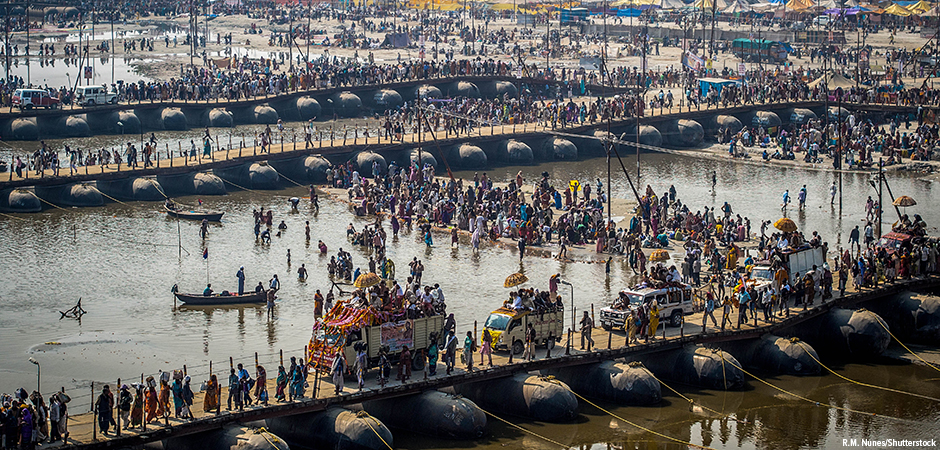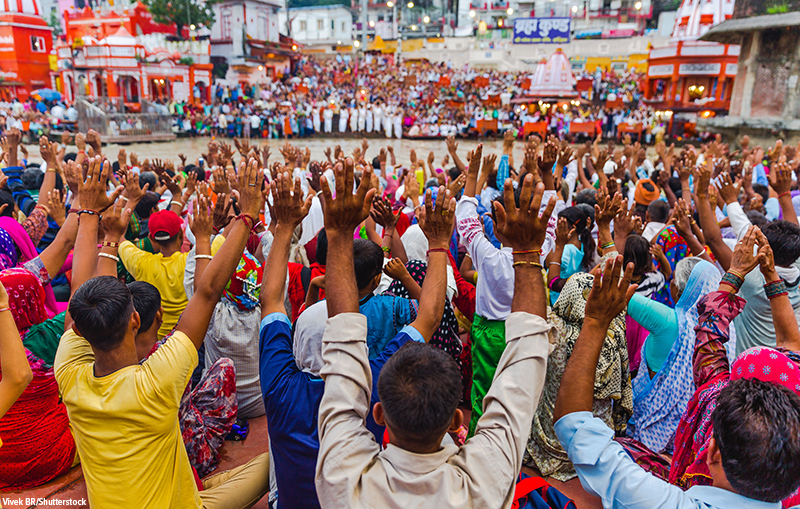
Imagine a public festival that lasts for forty-five days and is attended by millions of people. That’s India’s Kumbh Mela Festival, a semi-regular event which took place in 2025 in January and February. Here, btw explores what the Kumbh Mela Festival is all about, and describes a tragedy that occurred at this year’s celebration.
What is Kumbh Mela?
Kumbh Mela is the world’s largest religious festival, and the largest gathering of people anywhere on Earth. The name means “Festival of the Pitcher” in Sanskrit. “Mela” means a fair or gathering. The term “Kumbh” means pitcher and refers to Hindu mythology: a pitcher that contains the nectar of immortality. According to mythology, when demons and gods fought over the sacred pitcher, four drops of the nectar fell onto the four places in India. Those four places are where the festival is now held: Prayagraj, Haridwar, Nashik, and Ujjain.

Tens of millions of Hindu people from all over the world attend Kumbh Mela, but people of other faiths often join in as well. It includes religious figures as well as everyday citizens and families. The full festival is held every twelve years in all four cities. A half Kumbh is held every six. The 2025 festival was a Maha (Great) Kumbh Mela. This occurs only every 144 years because of a rare alignment of the sun, moon, Jupiter and Saturn. As a result, an estimated 400 million people attended this year’s festival, which ran from January 13 to February 26.
A Sacred Ceremony
The festival is based around the belief in the power of sacred rivers to purify their sins and bring them closer to holiness. Festival participants believe that bathing in these rivers during Kumbh Mela erases their sins. The festival lasts about 45 days, and ends with the final ceremonial bathing day, called shahi snan (or royal bath).
In addition to bathing in the sacred rivers, the festival also includes prayers, religious processions, and cultural performances. To make all of this happen takes an incredible amount of work and preparation. Temporary camps are set up to provide festivalgoers with food, shelter, and places for prayer. The 2025 festival provided 160,000 tents; 40,000 security officials; 15,000 sanitation workers; 99 parking lots; 30 temporary bridges over the rivers; 67,000 streetlights; 150,000 toilets; 25,000 trash cans; 2,700 AI-powered security cameras; a 776-mile drinking water pipeline; 7,000 buses; and temporary hospitals.
Tragedy Strikes
Despite all of this preparation, a crowd this massive can result in dangerous circumstances On January 29, a tightly packed crowd of festival attendees caused danger when a barrier near the river in Prayagraj broke. At least 30 people died and 60 more were injured.
On that day, between 80 and 100 million people were in Prayagraj. The crowd crush happened at one of the most sacred spots: the confluence of the Ganges and Yamuna Rivers. As two crowds coming from opposite directions began to collide with one another, some people tried to jump over barriers to get away. Others fell down the riverbank. Families sleeping along the bank were also injured during the chaotic crowd movements. This is not the first time that such a thing has happened. In 2013, dozens of people were killed and injured in a similar crowd crush at that year’s Kumbh Mela.
